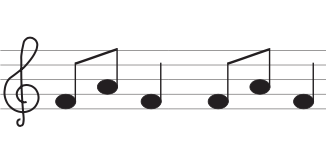
design: Natalia Favila Inacua
The Supreme Court of the United States started its new term last month, as it is always set to begin on the first Monday in October. Each term lasts a year, but the court is typically not in session from late June or early July until the following October.
The Supreme Court has a significant role in the government of the United States. According to whitehouse.gov, the job of the Supreme Court is “to interpret the meaning of a law, to decide whether a law is relevant to a particular set of facts, or to rule on how a law should be applied” but it doesn’t usually hold trials.
According to uscourts.gov, the Supreme Court is established in Article III, Section 1 of the Constitution. Each justice must be appointed by the president and approved by the Senate, and they usually hold office for life.
“The Supreme Court is made up of eight associate justices and one chief justice,” senior and Secretary-General of OMUN Josh Layne said. “They act as the final say in the judicial branch and are also in charge of overseeing the judicial circuit.”
Ketanji Brown Jackson was appointed by President Joe Biden to the position of Associate Justice on Feb. 25, and her nomination was confirmed on April 7 by a bipartisan group of senators. Jackson is the 116th Associate Justice of the United States, according to whitehouse.gov, and she is also the first African American woman to serve in that role.
“Jackson’s nomination won’t have an effect on the final vote, but her inclusion will give others her unique perspectives” AP Government teacher John Carmichael said. “Conservative appointed judges, appointed by Republican presidents control the court, 6-3.”
With a new, term, the court has opportunity to take up a lot of case appeals. According to supremecourt.gov, the number of cases that are filed to the Supreme Court has been increasing from the last century, and there is a process that is undergone to decide what cases will be heard.
“Approximately 7,000-9,000 cases are appealed to the court each year and if four of the justices vote to hear a case (rule of four) then the case is heard by SCOTUS,” Carmichael said.
One of the biggest cases that was on the fall docket for the court was Students for Fair Admissions v. President and Fellows of Harvard, which was from an educational standpoint. According to supremecourt.gov, this case was granted on Jan. 24 and the argument date was Oct. 3.
“Petitioner Students for Fair Admissions (SFFA) sued Harvard College over its admissions process, alleging that the process violates Title VI of the Civil Rights Act of 1964 by discriminating against Asian American applicants in favor of white applicants,” oyez.org stated. “Harvard admits that it uses race as one of many factors in its admissions process but argues that its process adheres to the requirements for race-based admissions outlined in the Supreme Court’s decision in Grutter v. Bollinger.”
Moore v. Harper is an upcoming important case to watch for, with its argument date as Dec. 7. After gaining another seat in the House of Representatives, North Carolina’s had to redistrict and their Republican-majority state legislature manipulated the new map to favor their party.
“The map was challenged in state court, and in February 2022, the North Carolina Supreme Court struck down the map for violating the state constitution’s ‘free elections clause’ and other provisions,” oyez.org stated. The legislators asked the U.S. Supreme Court to review based on an argument that the Elections Clause of the U.S. Constitution gives state legislatures alone the authority to regulate federal elections—the so-called Independent State Legislature theory.”
Throughout the term, the Supreme Court takes up cases of varying origins and strives to interpret the law according to the Constitution.
“They (Supreme Court) have the final say on whether a law is constitutional,” AP Government teacher John Carmichael said. “This is an extremely important power.”


